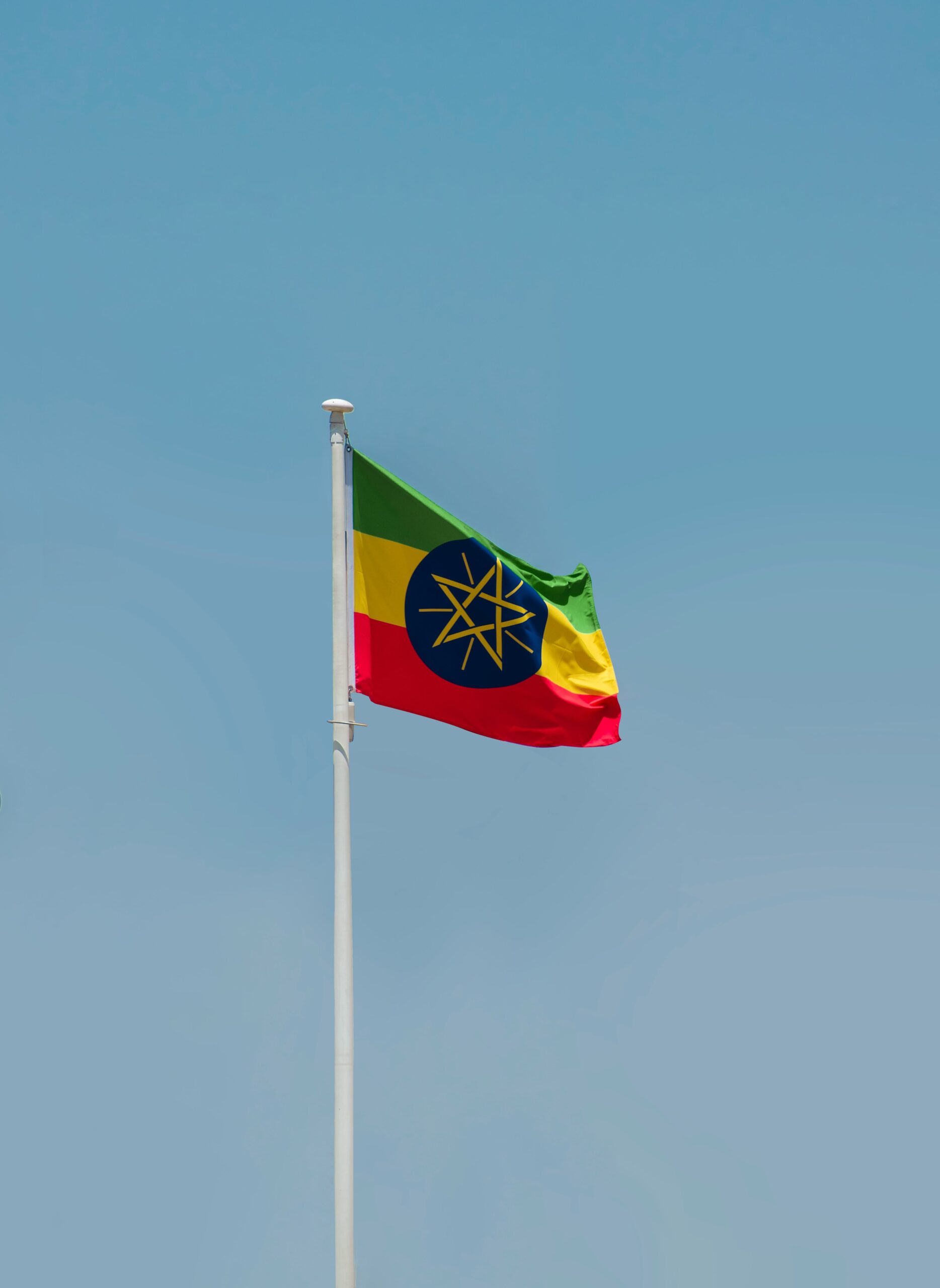What Is The Meaning Of The Ethiopian Flag?
What is the meaning of the Ethiopian flag?
The Ethiopian flag is a vibrant symbol that reflects the country’s rich history, culture, and values. It consists of three horizontal stripes of green, yellow, and red from top to bottom. In the center lies the national emblem, which features a blue circle with a yellow outlined star and rays. Each element of the flag has its own significance, deeply rooted in Ethiopia’s heritage and identity.
The green color on the Ethiopian flag represents the fertility of the land and hope for the future. It symbolizes the lush vegetation, agriculture, and natural resources that sustain the country. Green also signifies growth, prosperity, and the youth of Ethiopia, reflecting a positive outlook and aspiration for development and success.
Yellow stands for peace, harmony, and religious freedom in Ethiopia. It represents the country’s religious tolerance and unity among its diverse population. Yellow also symbolizes justice, equality, and the bright future envisioned by the Ethiopian people. It embodies the sun, light, and energy, signifying progress and optimism for a better tomorrow.
Red on the Ethiopian flag symbolizes the blood shed by Ethiopians in defense of their land, freedom, and equality. It represents the sacrifices made by the nation’s heroes and martyrs throughout history. Red also signifies strength, courage, and the resilience of the Ethiopian people in the face of challenges and adversity. It embodies the spirit of patriotism, determination, and the fight for independence and justice.
The national emblem at the center of the Ethiopian flag is a blue circle with a yellow star and rays. The blue color represents peace, harmony, and the unity of the Ethiopian people. It symbolizes the country’s commitment to diplomacy, stability, and cooperation with the international community. The yellow star represents diversity, equality, and the bright future of Ethiopia. It signifies the country’s aspirations for progress, prosperity, and success in all endeavors. The rays around the star exemplify hope, ambition, and the guiding light that leads Ethiopia towards a promising destiny.
The Ethiopian flag encapsulates the essence of the nation’s values, beliefs, and aspirations. It is a powerful emblem that unites the Ethiopian people and signifies their collective journey towards a better future. The colors and symbols on the flag embody the spirit of resilience, peace, hope, and pride that define Ethiopia’s identity on the global stage.
Explanation of the colors and symbols on the Ethiopian flag
Historical significance and evolution of the Ethiopian flag
The Ethiopian flag holds a deep historical significance that reflects the country’s journey through time. As one of the oldest independent countries in the world, Ethiopia’s flag has undergone several evolutions before reaching its current design. The origins of the flag date back to the early 19th century during the reign of Emperor Tewodros II, who introduced the tricolor flag with green, yellow, and red horizontal stripes. However, the modern Ethiopian flag as we know it today was officially adopted on August 28, 1996, following the overthrow of the Derg regime.
The Ethiopian flag’s evolution encapsulates the country’s rich historical narrative. The green on the flag represents the fertility of the land and hope for the future. It symbolizes the lush landscapes and the agricultural wealth of Ethiopia. The yellow symbolizes the country’s peace and religious freedom, reflecting the sun’s rays that shine upon the nation. the red symbolizes the sacrifices made by Ethiopian heroes in defense of their land and its independence. It honors the blood shed by those who fought for freedom and equality.
Throughout its history, the Ethiopian flag has served as a symbol of unity, resistance, and national pride. It has been a rallying point for Ethiopians during times of struggle and has inspired generations to uphold the values of freedom and sovereignty. The flag’s colors and symbols continue to resonate with Ethiopians both at home and in the diaspora, reminding them of their heritage and the struggles faced by their ancestors.
The Ethiopian flag’s historical significance and evolution highlight the resilience and spirit of the Ethiopian people. It stands as a powerful emblem of the country’s past, present, and hopes for the future. As Ethiopia continues to move forward, its flag remains a steadfast symbol of unity, strength, and pride for all who call the nation home.
Comparison of the Ethiopian Flag with Other National Flags
When exploring the Ethiopian flag in comparison with other national flags around the globe, several distinctive features set it apart. The Ethiopian flag comprises three horizontal stripes of green, yellow, and red colors from top to bottom, with the national emblem placed at the center. This design is unique in comparison to many other flags globally, which often feature vertical stripes or a different arrangement of colors.
One key similarity between the Ethiopian flag and some other national flags is the presence of symbolic colors. For instance, the green color on the Ethiopian flag represents the fertility of the land, yellow signifies peace and harmony among the country’s various ethnic groups, and red symbolizes the sacrifices made by Ethiopian martyrs during battles for independence. Similarly, flags of other nations incorporate colors and symbols that hold significant meanings related to their history, culture, or aspirations.
In terms of the historical significance of the flag design, the Ethiopian flag holds a special place as one of the oldest flags in continuous use. Its evolution over time has reflected the country’s changing political landscape, from imperial rule to periods of occupation and liberation struggles. This rich history embedded in the flag’s design contrasts with flags of newer nations or those that have undergone significant redesign in recent years.
Culturally and traditionally, the Ethiopian flag resonates deeply with the country’s population. The emblem at the center of the flag, featuring a blue disc representing unity, holds a prominent place in Ethiopian heritage and is often seen in various forms of traditional art and clothing. This cultural significance sets the Ethiopian flag apart from many other national flags that may not have such strong cultural symbolism integrated into their designs.
When it comes to the usage and protocol of displaying the Ethiopian flag, there are specific guidelines and etiquettes to follow, similar to other national flags. For example, raising the Ethiopian flag should be done respectfully, with attention to proper positioning and handling to show reverence for the national symbol. Understanding these protocols helps maintain the dignity and respect associated with the flag, a practice shared by many nations worldwide.
While each national flag is a unique representation of a country’s identity, the Ethiopian flag stands out for its distinct colors, symbols, historical significance, cultural importance, and protocol of use. By comparing it with other flags, we gain a deeper appreciation for the complexity and richness of Ethiopia’s national emblem within the global context.
Cultural and Traditional Representations on the Ethiopian Flag
When exploring the cultural and traditional representations on the Ethiopian flag, it is essential to delve into the rich history and symbolism behind this national emblem. The flag of Ethiopia is a tricolor symbol consisting of three horizontal stripes of green, yellow, and red from top to bottom.
The green color on the Ethiopian flag holds significant cultural importance as it represents the fertility of the land and the hope of the people for the future. Green is a color often associated with growth, harmony, and prosperity in Ethiopian culture, reflecting the country’s lush landscapes and agricultural abundance.
Yellow, another prominent hue on the flag, symbolizes justice and equality. This color signifies the fair treatment of all citizens under the law and the desire for a just society. In Ethiopian tradition, yellow is also linked to peace and harmony among diverse ethnic groups that make up the nation.
Red, the final color on the Ethiopian flag, carries historical and cultural connotations related to the sacrifices made by Ethiopian patriots to defend their land and independence. Red symbolizes the blood shed by Ethiopian heroes in battles against foreign aggressors and internal oppressors, showcasing the resilience and courage of the Ethiopian people throughout history.
Additionally, the Ethiopian flag features a blue circle at the center, encasing a yellow star. This emblematic design represents unity among the various ethnic and religious groups in Ethiopia, emphasizing the country’s commitment to inclusivity and harmony. The blue background of the circle symbolizes peace and prosperity, embodying the aspirations of the Ethiopian nation for a tranquil and progressive future.
The cultural and traditional representations on the Ethiopian flag encapsulate the values, history, and aspirations of the Ethiopian people. This iconic national symbol serves as a visual reminder of Ethiopia’s rich heritage, diversity, and collective spirit, reflecting the country’s journey towards unity, equality, and prosperity.
Usage and Protocol of Displaying the Ethiopian Flag
The Ethiopian flag is a symbol of pride and sovereignty for the nation, and its display is governed by specific protocols and guidelines to show respect and honor. Proper usage and handling of the flag are essential to uphold the dignity it represents. Whether in formal settings, public spaces, or during national events, understanding how to display the Ethiopian flag correctly is crucial.
Importance of Proper Flag Display
Displaying the Ethiopian flag is a way to showcase national unity, identity, and heritage. It symbolizes the country’s history, culture, and people, making it a powerful emblem that demands respect. By adhering to the protocols of flag etiquette, individuals and organizations demonstrate their reverence for Ethiopia and its values.
Rules for Displaying the Ethiopian Flag
When showcasing the Ethiopian flag, certain rules must be followed to ensure it is done appropriately. Some key guidelines for displaying the flag include:
-
Positioning: The flag should be flown high and in a place of honor. It should never be flown below any other flag or banner.
-
Respect: The flag should be treated with respect and dignity at all times. It should never touch the ground or be used as a decorative drapery.
-
Lighting: If displayed at night, the flag should be properly illuminated to ensure it is visible.
-
Ceremonies: During ceremonies or events where the flag is raised or lowered, individuals should stand at attention and show respect.
-
Parades: When carried in parades or processions, the flag should be held high and straight, never dipped or bowed.
Displaying the Ethiopian Flag in Various Settings
The Ethiopian flag is commonly seen in a variety of settings, each requiring different protocols for display. Whether at government buildings, educational institutions, sporting events, or private residences, the flag should always be treated with reverence and honor. Understanding the specific guidelines for different scenarios ensures the flag is displayed correctly at all times.
The Ethiopian flag holds significant cultural and historical importance, and displaying it with the proper decorum is essential to uphold the nation’s values and traditions. By following the prescribed protocols for flag etiquette, individuals and organizations pay homage to Ethiopia and demonstrate their allegiance to the country. Proper flag display is a symbol of respect, unity, and patriotism, reflecting the pride and honor associated with the Ethiopian flag.
Conclusion
The Ethiopian flag is a powerful symbol deeply rooted in the country’s history, culture, and values. The green, yellow, and red tricolor represents hope, justice, harmony, and sacrifice, while the national emblem of the Lion of Judah and the Star of David symbolize the country’s historical roots and identity. The flag has evolved over time, reflecting the changing political landscape and the struggle for independence and unity. Compared to other national flags, the Ethiopian flag stands out for its unique combination of colors and symbols, showcasing the country’s rich heritage and diversity.
Cultural and traditional representations on the Ethiopian flag underline the importance of unity, faith, and pride among the diverse ethnic groups and communities in the country. The flag serves as a unifying symbol that transcends cultural and religious differences, fostering a sense of national identity and belonging. Its usage and protocol in displaying the Ethiopian flag are governed by specific guidelines to ensure respect and honor for the national symbol. Whether flown on official buildings, during national holidays, or at international events, the Ethiopian flag embodies the spirit and resilience of the Ethiopian people.
The Ethiopian flag continues to inspire and unite Ethiopians at home and abroad, serving as a powerful emblem of the country’s past struggles and future aspirations. Its significance lies not only in its design and colors but also in the values and principles it represents. As Ethiopia continues to progress and overcome challenges, the flag remains a steadfast symbol of hope, unity, and resilience for generations to come. In a rapidly changing world, the Ethiopian flag stands as a timeless reminder of the country’s rich heritage and bright future.





